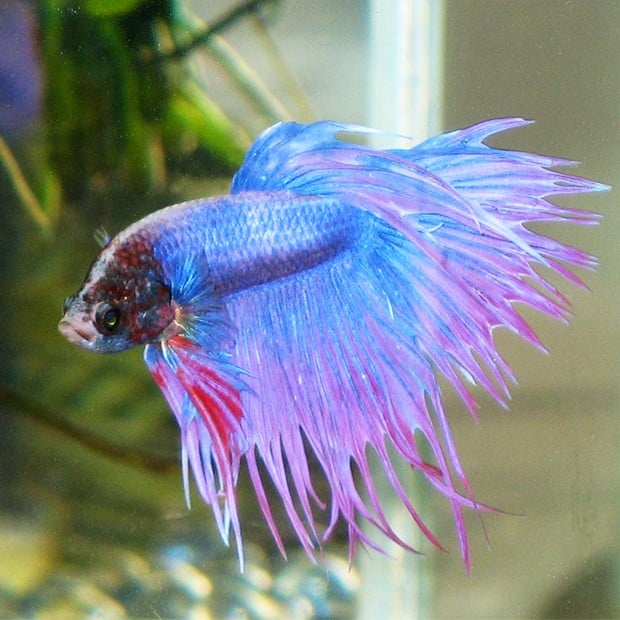Understanding Betta Fish Behavior: What Every Proprietor Should Know
Understanding Betta Fish Behavior: What Every Proprietor Should Know
Blog Article
Breeding Betta Fish: a Comprehensive Step-By-Step Guide to Effectively Raising Baby Bettas From Eggs to Their Adult Years
Breeding Betta fish is a thorough endeavor that requires careful planning and execution to guarantee the effective growth of fry from eggs to grow fish. As the male Betta faithfully constructs a bubble nest and guards the precious eggs, the subsequent stages of care and transition need attention to detail and understanding of finest methods.

Picking Breeding Pairs
When beginning on the journey of reproducing Betta fish, choosing the right reproduction sets is important to achieving preferable qualities and a healthy family tree - betta fish. The very first step in this process is to identify the certain characteristics you wish to improve or preserve, such as shade, fin kind, and body shape. It is vital to select genetically diverse sets to avoid inbreeding, which can bring about health issues and unwanted attributes
Evaluate prospective breeding candidates carefully. A healthy male Betta needs to display vibrant colors, an energetic attitude, and well-formed fins, while the female must likewise display lively coloration and a rounded stomach, showing readiness for spawning. Observing the personality of both fish is vital, as aggressive or excessively reluctant individuals might not reproduce successfully.
Keeping records of the moms and dad fish's ancestry can assist you track genetic attributes and possible issues. Ultimately, investing time in the selection process will substantially improve the possibility of generating strong, lively children that satisfy your reproduction goals.

Preparing the Reproduction Container
Producing an optimal reproduction setting is a vital action after selecting ideal sets for Betta fish. The breeding container ought to be especially made to supply comfort and boost the natural reproduction habits of the fish. Start with a container size of at the very least 10 gallons to make sure adequate room for both the male and women Bettas.
Maintain a mild purification system to maintain the water clean while staying clear of strong currents that can worry the fish. Additionally, an air rock can be included in offer oxygenation without interrupting the water surface area way too much.
Temperature level guideline is important; aim for a steady variety of 78-82 ° F(25-28 ° C) utilizing a dependable heating system. The pH level must be kept between 6.5 and 7.5, and routine water adjustments are required to make certain high water quality.
Integrate drifting plants or generating mops to create concealing areas for the lady, while also encouraging bubble nest building by the man - betta fish. Make certain the tank is cost-free from sharp decorations and any prospective dangers, as the well-being of the fish need to constantly be focused on throughout this critical phase of breeding.
The Breeding Process
Usually, the reproducing procedure for Betta fish includes a series of distinctive and evident behaviors that suggest readiness for reproduction. The male Betta starts by constructing a bubble nest at the water's surface area, which functions as a website for the fed eggs. This nest is critical, as it gives a secure setting for the eggs until they hatch.
Once the nest is established, the male will certainly present courtship actions, such as flaring his fins and showing vibrant colors to draw in the female. The female, upon sensing the male's preparedness, will certainly react by displaying vertical stripes along her body, indicating her receptiveness.
The fertilized eggs after that fall to the bubble nest, where the male very carefully accumulates and returns them to the nest. Following this, the male presumes responsibility for safeguarding the nest and making sure the security of the eggs up until they hatch out, normally within 24-36 hours.
Caring for Betta Fry
Looking after Betta fry requires careful attention to their setting and nutrition to make certain healthy development and development. After hatching out, Betta fry are extremely little and susceptible, demanding a stable and tidy environment. Preserving a water temperature level between 78 ° F and 80 ° F is vital, as Betta fry prosper in cozy problems. Additionally, guarantee that the water is free of hazardous toxins; routine water modifications of 10-20% are advised to maintain ideal water quality.
Feeding Betta fry is equally important. Feed them small quantities numerous times a day, being careful not to overfeed, which can lead to water view top quality concerns.
Transitioning to Grownup Bettas
As Betta fry mature, transitioning them to adult Bettas is a vital phase that needs mindful management of their environment and social communications. This procedure commonly starts when the fry visit homepage reach around six weeks old, at which factor they can be progressively presented to a much more structured living setting.
To facilitate this transition, it is important to ensure that the water criteria-- such as temperature, pH, and ammonia degrees-- are ideal and secure. Adult Betta fish thrive in cozy water (around 78-80 ° F) with a pH of 6.5 to 7.5. Progressively accustom the fry to these conditions to lessen stress.
Social communications are another crucial factor; man Bettas are infamously territorial and aggressive. As a result, it is advisable to different men into specific tanks as they grow. Female Bettas can be housed together, yet treatment ought to be required to keep track of for indicators of aggression.
Furthermore, dietary adjustments ought to be made as the fry grow. Incorporate top quality pellets and live foods to sustain their development and health. By handling these variables efficiently, you can promote an effective change to adulthood for your Betta fish.

Conclusion
Effective breeding of Betta fish calls for cautious attention to information throughout the entire procedure, from Recommended Reading choosing genetically varied sets to offering optimum care for fry. In addition, a well balanced diet and progressive adaptation to grown-up environments are crucial for the development and development of Betta fish.
Report this page